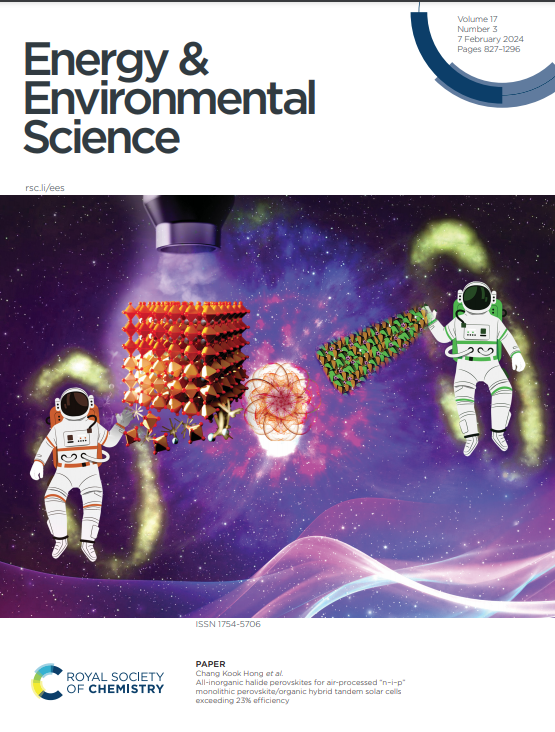Nucleation driving force-controlled fibril network formation enables polythiophene solar cells with exceeding 18% efficiency from non-halogenated solvent
IF 32.4
1区 材料科学
Q1 CHEMISTRY, MULTIDISCIPLINARY
引用次数: 0
Abstract
Polythiophenes are the most promising electron donors for organic solar cells (OSCs) in large-scale manufacturing due to their simple chemical structures and low production cost. However, the efficiency of polythiophene solar cells is largely limited by the difficulty in morphology optimization. Herein, we report the construction of refined fibril network structure in polythiophene:non-fullerene acceptor blends based on Classical Nucleation Theory. By screening solvents for polythiophene to obtain appropriate nucleation driving force while ensuring that the non-fullerene acceptor does not over-crystallize, a refined crystalline fibril network morphology in the blend consisting of a structurally simple polythiophene P5TCN-HD and non-fullerene acceptor was obtained. This optimal morphology improves exciton dissociation and charge transport, thereby endowed the solar cells with an unprecedented power conversion efficiency of 18.12% and a fill factor of 79.17%, marking new breakthroughs for polythiophene-based OSCs. Importantly, these successes were achieved from toluene, a common non-halogenated and environmental benign solvent. Moreover, we revealed the crucial impact of solvent quality on the formation of fibril network structure, offering valuable insights for optimizing the morphology of polythiophene systems. This underscores the promising prospect of polythiophenes in developing high-efficiency yet low-cost OSCs via environmental benign processing, which will drive the industrialization of OSCs.求助全文
约1分钟内获得全文
求助全文
来源期刊

Energy & Environmental Science
化学-工程:化工
CiteScore
50.50
自引率
2.20%
发文量
349
审稿时长
2.2 months
期刊介绍:
Energy & Environmental Science, a peer-reviewed scientific journal, publishes original research and review articles covering interdisciplinary topics in the (bio)chemical and (bio)physical sciences, as well as chemical engineering disciplines. Published monthly by the Royal Society of Chemistry (RSC), a not-for-profit publisher, Energy & Environmental Science is recognized as a leading journal. It boasts an impressive impact factor of 8.500 as of 2009, ranking 8th among 140 journals in the category "Chemistry, Multidisciplinary," second among 71 journals in "Energy & Fuels," second among 128 journals in "Engineering, Chemical," and first among 181 scientific journals in "Environmental Sciences."
Energy & Environmental Science publishes various types of articles, including Research Papers (original scientific work), Review Articles, Perspectives, and Minireviews (feature review-type articles of broad interest), Communications (original scientific work of an urgent nature), Opinions (personal, often speculative viewpoints or hypotheses on current topics), and Analysis Articles (in-depth examination of energy-related issues).
 求助内容:
求助内容: 应助结果提醒方式:
应助结果提醒方式:


